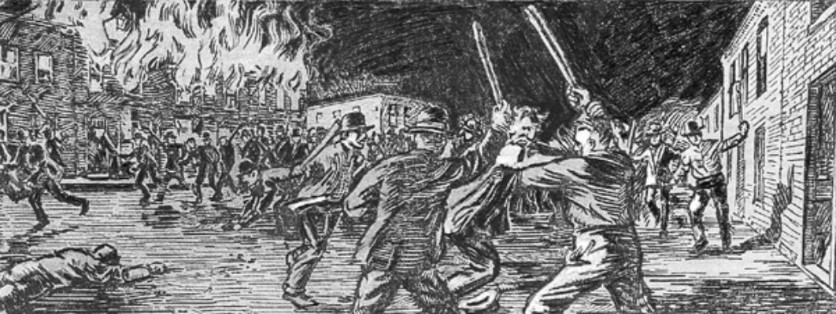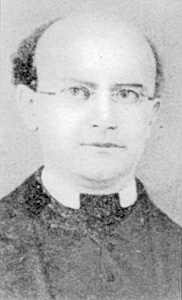Election Day: Monday, August 6, 1855 - Nativist mobs attempt to block voting by mostly-Catholic German and Irish immigrants - Armbruster’s Brewery at Liberty and Baxter is burned - Cannons are rolled to the doors of St. Martin of Tours Church - The Cathedral of the Assumption and Saint Patrick’s Church are searched for arms – Immigrant homes and businesses are looted - Quinn’s Row at 10th and Main Streets (image below) is burned with the inhabitants barricaded inside - At least 22 persons are killed and many more are injured.

Sketch from the Louisville Herald

Sketch from Louisville Courier-Journal 1897


Rev. Karl Boeswald, Catholic Church of the Immaculate Conception,
Rev. Thomas Joyce, the first pastor of St. Patrick's Catholic Church, was hanged but cut down during the Bloody Monday riots. Father Joyce, who later died of causes not related to Bloody Monday,
Statement of Ludwig Stierlin About the Effect of Bloody Monday on the Germans in Louisviile in the 1850s
"If one can designate the years from 1849 to 1855 as the period of Storm and Stress for Germans, one also may similarly designate the time after the previously mentioned Know Nothings’ atrocities until the outbreak of the Civil War as the time of Weariness and Lethargy. And this Weariness and Lethargy was even so great, if yet not greater than the spirit of Effort and Excitement that had previously existed. In fact a general apathy and despondency seized the Germans. For years they took part in neither local nor state elections, indeed left the political field totally to the Know Nothings, to the sorrow of a large number of native-born Americans antagonistic to this proscriptive party, and led, so to say, only a vegetarian’s life. Initially they scarcely still dared to visit the public beer gardens on Sunday afternoon, out of fear of a confrontation with the bullies, who were brought in by the Know-Nothings on the bloody election day, and remained in hopes of being paid for future services." (Stierlin was a former editor of the Louisville Anzeiger and made the above statement in a German-language history of Louisville's Germans published in 1873).
Suggested Reading:
George H. Yater, Two Hundred Years at the Falls of the Ohio; A History of Louisville and Jefferson County.(Louisville, Ky.: The Filson Club, 1987). pp. 61–70.
The Filson Club Historical Quarterly, No. 66, April 1992, EMMET V. MITTLEBEELER, “The Aftermath of Louisville’s Bloody Monday Election Riot of 1855,” pp. 197–219.
The Filson Club Historical Quarterly, No. 67, October 1993, THOMAS D. BALDWIN, “George D. Prenctice, The Louisville Anzeiger, and the 1855 Bloody Monday Riots,” pp. 482–95.
Yearbook of German-American Studies Vol. 29, 1994, THOMAS D. BALDWIN. "The Public Image of Germans in Louisville and Jefferson County, Kentucky, 1840–1872," pp. 83–90.
Sister Agnes G. McGann, Nativism in Kentucky in 1860 (Washington, D.C.: Catholic University of America, 1944)
On the internet see: http://louisvilleirish.com/bloody_monday.html
Germans in Louisville:A History (published Oct. 2015)see https://www.arcadiapublishing.com/Products/9781626196544
Louisville Eccentric Observer, Vol. 29 No. 29 (Aug. 8, 2018, "Our Bloody Monday:Immigrant Hatred 163 Years Ago":10–13.
This page was commenced September 14, 2005. More will be added in the near future. If you would like to contribute to this site contact J. R. Reinhart, Webmaster and Coordinator. at jrein8@yahoo.com